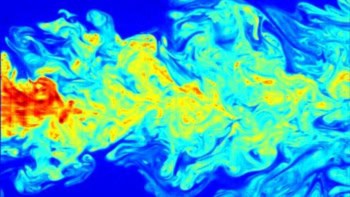Geophysicists in the UK have used a mathematical model based on old ships' logbooks to show that the observed decline in the strength of the Earth's magnetic field may only be a recent phenomenon -- and not a fixed trend as commonly thought. David Gubbins and colleagues at Leeds University say that our planet's magnetic field was stable until the mid-1800s and has been weakening steadily only since then. The decline is caused by magnetic flux reversals in the Southern Hemisphere and could point to a geomagnetic flip of the Earth's poles sometime this millennium (Science 312 900).

Scientists now know that the Earth’s magnetic field is currently decreasing at a rate of about 0.5% a decade. If this trend continues, the magnetic field might reverse so that the North Pole becomes the South Pole and vice versa. Such geomagnetic flips are thought to occur once every 300,000 years or so, with the actual reversal taking thousands of years to complete. However, it is not known whether a decline in the Earth’s magnetic field strength is inevitable.
To help answer this question, David Gubbins and colleagues at Leeds University collected old navigational data from ships’ log books, dating from 1590 to 1840.This data mainly consists of magnetic field directions from the ships’ compasses. The team then used this data to reconstruct the Earth’s magnetic field strength during this time.
The researchers calculated that the “dipole Gauss coefficient”, which is proportional to the Earth’s dipole moment, fell by about 2 nanoTesla per year between 1590 to 1840, which is significantly smaller than the decrease of 15nT per year after 1840. These results show that the magnetic field strength was relatively stable from 1590 to 1840, and has steadily fallen by about 5% each century since then (see figure). Finally, the team also examined the difference in the magnetic field’s structure at the Earth’s core-mantle boundary before and after the mid-1800s from paleomagnetic intensity data. They found that the most recent decline in magnetic field strength most likely comes from an area of reversed flux in the Southern Hemisphere, near Antarctica — a feature that is absent in the 1590-1840 data.
Such changes will present a major challenge to geophysicists, who would like to understand these variations and where they come from in the first place. Scientists believe that our planet’s internal magnetic dynamo is responsible for changes in the magnetic field strength, but the actual mechanisms are not well understood.



